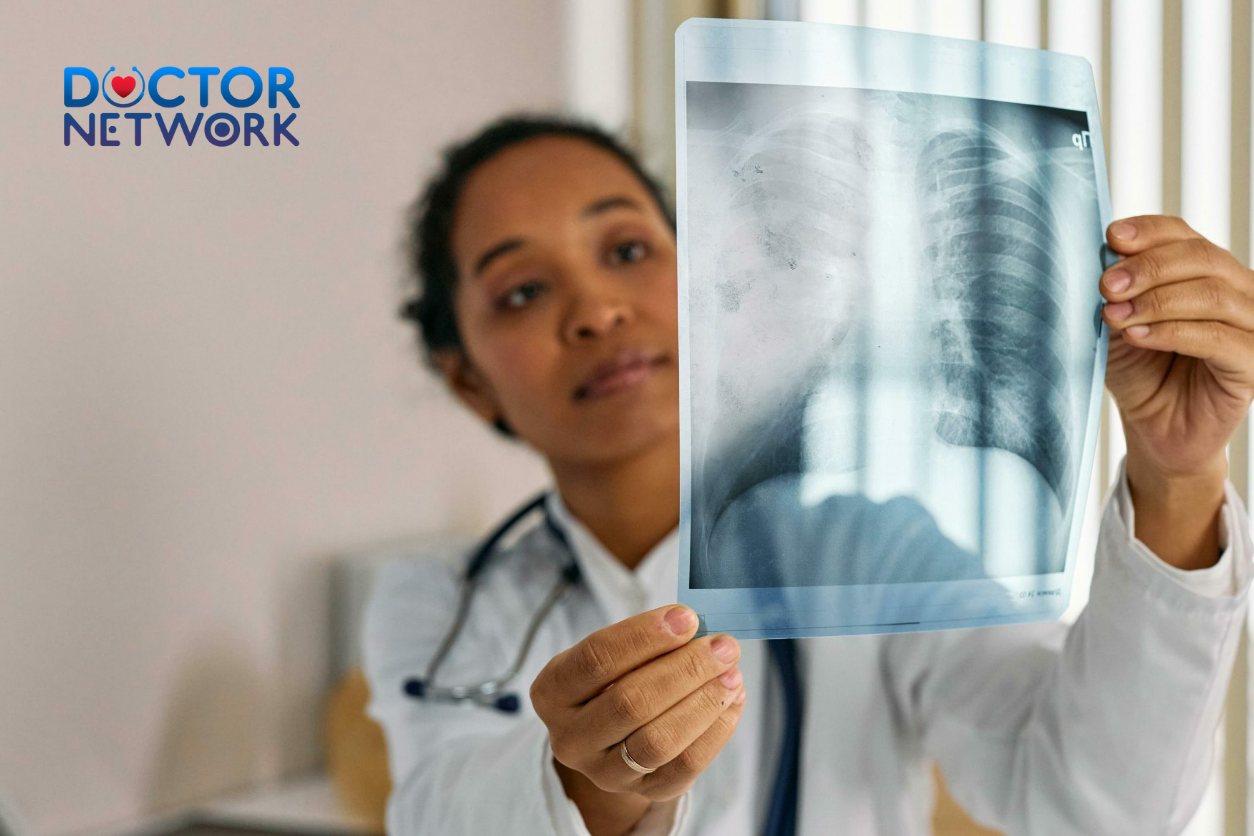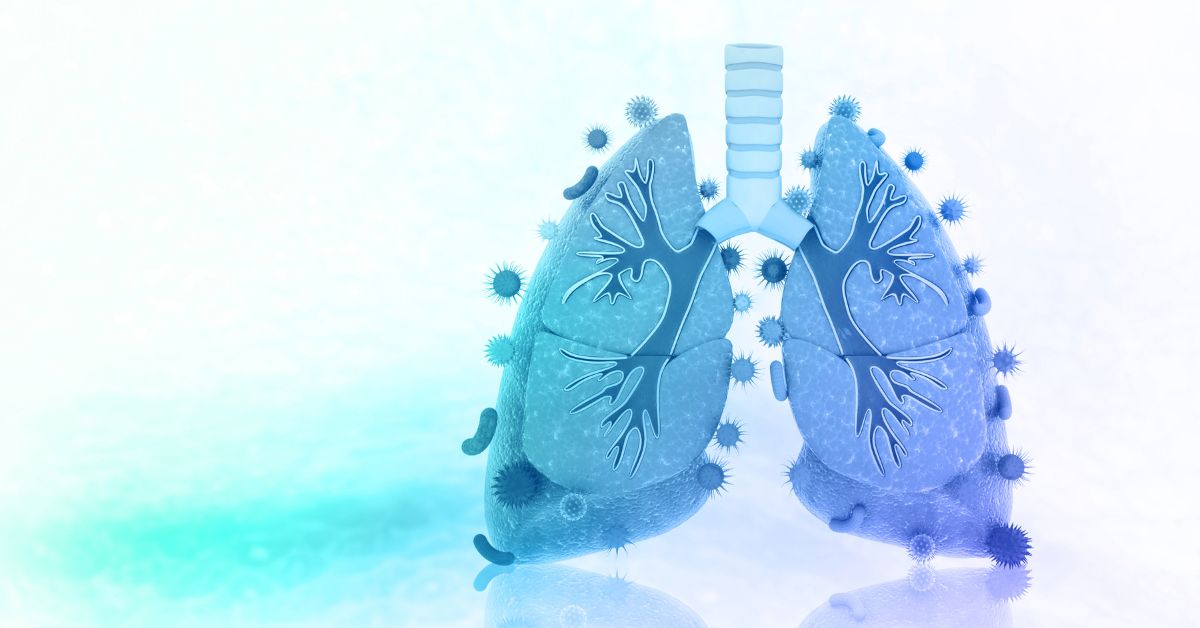Can you live with one lung? The answer is a resounding yes—thousands of people worldwide lead fulfilling, active lives after pneumonectomy surgery. While removing an entire lung creates significant physiological changes, proper medical management, lifestyle adaptations, and comprehensive rehabilitation enable patients to maintain excellent quality of life and pursue meaningful activities.
Pneumonectomy, the surgical removal of a complete lung, represents one of thoracic surgery’s most extensive procedures. This comprehensive guide explores every aspect of single-lung living, from understanding why lung removal becomes necessary to mastering long-term wellness strategies. We’ll examine the immediate post-operative period, physiological adaptations your body undergoes, practical daily living adjustments, essential lifestyle modifications, ongoing medical care requirements, and psychological support systems that contribute to successful outcomes.
Whether you’re preparing for pneumonectomy surgery, supporting a loved one through recovery, or seeking information about long-term prognosis, this evidence-based resource provides the knowledge and tools necessary for navigating life’s journey with one lung while maintaining independence, health, and happiness.
The Starting Point: Why a Lung Might Need Removal

Pneumonectomy becomes medically necessary when preserving lung tissue poses greater risks than surgical removal. Lung cancer represents the most frequent indication for complete lung extraction, particularly when malignant tumors involve central airways, major blood vessels, or extensive portions of lung parenchyma that cannot be addressed through lesser resections.
Primary Medical Conditions Requiring Pneumonectomy:
- Lung Cancer (Non-Small Cell and Small Cell): Advanced malignancies affecting main bronchi, pulmonary arteries, or multiple lobes
- Severe Pulmonary Infections: Chronic tuberculosis, fungal infections, or necrotizing pneumonia causing irreversible lung destruction
- Traumatic Injuries: Massive chest trauma resulting in irreparable damage to pulmonary structures, major vessels, or airways
- Congenital Abnormalities: Rare developmental disorders causing complete lung dysfunction
- Extensive Bronchiectasis: Widespread airway dilation and scarring affecting entire lung function
The decision for pneumonectomy involves multidisciplinary teams including pulmonologists, thoracic surgeons, oncologists, anesthesiologists, and respiratory therapists who carefully evaluate each patient’s condition, overall health status, and potential for successful single-lung function.
Understanding the Procedure: What Happens During a Pneumonectomy
Pneumonectomy involves the complete surgical removal of one lung through a major thoracic operation lasting 3-6 hours. The procedure requires general anesthesia, mechanical ventilation, and often involves removing not only lung tissue but also associated lymph nodes, portions of the pericardium, or chest wall structures depending on the underlying condition.
Surgical Approach and Technique:
The surgeon typically uses a posterolateral thoracotomy approach, creating an incision between ribs to access the thoracic cavity. During the operation, the pulmonary artery, pulmonary veins, and main bronchus undergo careful dissection and closure. The remaining chest space gradually fills with fluid and scar tissue over subsequent months, while the mediastinum (central chest structures) shifts toward the operative side.
Types of Pneumonectomy:
- Standard Pneumonectomy: Complete lung removal with standard reconstruction
- Extrapleural Pneumonectomy: Removal including pleural lining, often performed for mesothelioma
- Completion Pneumonectomy: Removal of remaining lung tissue after previous partial resection
The complexity and duration of surgery depend on factors such as underlying disease, previous chest operations, anatomical variations, and the need for additional procedures like chest wall reconstruction or diaphragmatic repair.
The First Steps of the Journey: Immediate Post-Surgery and Recovery
The immediate post-pneumonectomy period typically requires 7-14 days of intensive hospital monitoring and rehabilitation. Initial recovery focuses on pain management, respiratory support, cardiovascular stability, and prevention of common complications such as cardiac arrhythmias, respiratory failure, or bronchopleural fistula formation.
Immediate Post-Operative Timeline:
| Recovery Phase | Duration | Key Focus Areas |
|---|---|---|
| ICU Stay | 1-3 days | Hemodynamic monitoring, ventilator weaning, cardiac rhythm surveillance |
| Acute Recovery | 4-7 days | Pain control, early mobilization, chest tube management, respiratory therapy |
| Pre-Discharge | 7-14 days | Independent mobility, medication education, wound care instruction |
Critical Recovery Milestones:
- 24-48 Hours: Extubation from mechanical ventilation, initial mobilization, nasogastric tube removal
- 48-72 Hours: Chest tube removal (if placed), transition to oral medications, progressive ambulation
- 1 Week: Independent walking, stair climbing assessment, discharge planning initiation
- 2 Weeks: Wound healing evaluation, activity tolerance testing, home care preparation
Early mobilization proves crucial for preventing complications like pneumonia, blood clots, and muscle deconditioning. Physical therapists work with patients to establish safe movement patterns while respiratory therapists teach breathing exercises that optimize remaining lung function and promote effective secretion clearance.
Physiological Realities: How One Lung Impacts Your Body
Living with one lung reduces total respiratory capacity by approximately 35-50%, creating permanent changes in breathing patterns, exercise tolerance, and daily activity performance. The remaining lung undergoes compensatory expansion and improved efficiency, while respiratory muscles, particularly the diaphragm, adapt to generate more effective ventilation with reduced lung volume.
Respiratory System Adaptations:
The single functioning lung experiences hyperinflation, increased blood flow, and enhanced oxygen exchange efficiency over 6-12 months post-surgery. The mediastinum shifts toward the operative side, allowing maximum expansion of the remaining lung. Diaphragmatic function becomes increasingly important as the primary driver of ventilation.
Quantifying Physical Limitations:
| Activity Level | Pre-Surgery | Post-Pneumonectomy | Adaptation Strategies |
|---|---|---|---|
| Stair Climbing | Continuous | Frequent rest stops every 5-10 steps | Install handrails, plan extra time |
| Walking Distance | Unlimited | 50-75% of previous capacity | Pacing, regular breaks, assistive devices |
| Lifting Capacity | Normal limits | Reduced to 10-20 pounds | Mechanical aids, proper body mechanics |
Common Physical Experiences:
- Dyspnea (Shortness of Breath): Normal response to exertion, distinguishable from medical emergency
- Reduced Exercise Tolerance: Gradual improvement over 6-18 months with proper conditioning
- Fatigue: Energy conservation becomes essential for daily activity management
- Chest Wall Changes: Altered chest shape due to mediastinal shift and compensatory expansion
Understanding these physiological realities helps patients set realistic expectations while working toward optimal function within their new physical parameters.
Daily Living: Managing Challenges and Adjustments
Successfully managing daily life with one lung requires strategic planning, energy conservation techniques, and proactive health maintenance to minimize complications while maximizing independence. Most routine activities remain achievable with proper pacing, adaptive equipment, and breathing management strategies.
Breathing Management Strategies:
- Pursed-Lip Breathing: Inhale through nose for 2 counts, exhale through pursed lips for 4 counts
- Diaphragmatic Breathing: Focus on deep abdominal breathing rather than shallow chest breathing
- Activity Pacing: Alternate periods of activity with rest to prevent overexertion
- Positioning: Use forward-leaning positions during breathlessness episodes
Energy Conservation Techniques:
- Task Prioritization: Complete essential activities during peak energy periods
- Environmental Modifications: Organize frequently used items at waist level
- Assistive Devices: Utilize long-handled tools, lightweight equipment, wheeled carts
- Activity Clustering: Group similar tasks to minimize energy expenditure
Infection Prevention Protocol:
| Prevention Strategy | Implementation | Frequency |
|---|---|---|
| Hand Hygiene | Soap and water or alcohol sanitizer | Before meals, after public spaces |
| Vaccinations | Influenza, pneumococcal, COVID-19 | Annual or as recommended |
| Social Distancing | Avoid crowded spaces during illness seasons | Ongoing awareness |
| Environmental Control | Air purifiers, avoid smoke exposure | Continuous |
Warning Signs Requiring Medical Attention:
- Sudden severe shortness of breath
- Chest pain or pressure
- Fever above 100.4°F (38°C)
- Coughing up blood or green/yellow sputum
- Significant changes in breathing patterns
- Extreme fatigue or weakness
Proactive infection prevention becomes particularly crucial since pneumonia or other respiratory infections pose greater risks with reduced lung capacity.
Essential Lifestyle Changes for a Healthier Life

Optimal outcomes after pneumonectomy depend on comprehensive lifestyle modifications that support respiratory health, cardiovascular function, and overall physical conditioning. Smoking cessation represents the single most important change, while nutrition optimization, appropriate exercise, and environmental awareness create the foundation for long-term wellness.
Smoking Cessation and Environmental Protection:
Complete tobacco cessation is non-negotiable for pneumonectomy patients. Even minimal smoke exposure can trigger respiratory complications, impair healing, and increase infection risks. Environmental irritants including secondhand smoke, air pollution, chemical fumes, and dust particles require active avoidance through air filtration systems, protective equipment, and lifestyle choices.
Nutritional Optimization Strategy:
- Anti-Inflammatory Foods: Fatty fish, leafy greens, berries, nuts support respiratory health
- Protein Adequacy: 1.2-1.5 grams per kilogram body weight for tissue maintenance
- Hydration: 8-10 glasses daily to maintain mucus membrane function
- Caloric Balance: Prevent excessive weight gain that stresses respiratory system
Safe Exercise Guidelines:
| Exercise Type | Recommended Activities | Intensity Level | Precautions |
|---|---|---|---|
| Cardiovascular | Walking, stationary cycling, swimming | 60-70% max heart rate | Monitor breathlessness |
| Strength Training | Light weights, resistance bands | Low to moderate | Avoid breath-holding |
| Flexibility | Gentle stretching, tai chi | Low intensity | Focus on chest expansion |
Pulmonary Rehabilitation Programs:
Structured pulmonary rehabilitation provides supervised exercise training, education, and support specifically designed for individuals with compromised lung function. These 6-12 week programs typically include:
- Progressive exercise conditioning
- Breathing technique instruction
- Nutritional counseling
- Psychological support
- Medication management education
Supplemental Oxygen Therapy:
Some patients require supplemental oxygen during exertion or continuously, depending on blood oxygen levels and symptom severity. Modern portable oxygen concentrators enable mobility and independence while maintaining adequate oxygenation during daily activities.
Looking Ahead: Long-Term Care and Monitoring
Long-term success after pneumonectomy requires lifelong medical surveillance, proactive health maintenance, and early intervention for potential complications. Regular follow-up appointments allow healthcare teams to monitor remaining lung function, detect problems early, and adjust treatment plans as needed.
Ongoing Medical Surveillance Schedule:
- First Year: Quarterly appointments with chest imaging and pulmonary function tests
- Years 2-5: Biannual evaluations with annual comprehensive assessments
- Long-term: Annual monitoring with symptom-based additional visits
Prognosis and Life Expectancy Considerations:
Long-term outlook depends heavily on the original condition necessitating pneumonectomy. Patients with benign conditions like infection or trauma generally have excellent long-term survival rates. Cancer patients’ prognosis varies based on cancer stage, type, and response to treatment, but many live decades after surgery with good quality of life.
Potential Long-Term Complications:
- Cardiac Issues: Right heart strain from altered blood flow patterns
- Spinal Deformity: Scoliosis development from mediastinal shift
- Chronic Pain: Post-thoracotomy pain syndrome affecting quality of life
- Respiratory Infections: Increased susceptibility requiring aggressive treatment
Recognizing Medical Emergencies:
Immediate medical attention is required for:
- Sudden severe chest pain
- Acute shortness of breath at rest
- Hemoptysis (coughing blood)
- High fever with chills
- Syncope (fainting) episodes
- Significant changes in exercise tolerance
Early recognition and treatment of complications significantly improve outcomes and prevent progression to life-threatening situations.
The Human Element: Emotional Well-being and Support
The psychological impact of major thoracic surgery and permanent physical limitations requires dedicated attention to mental health, emotional support, and adaptive coping strategies. Many patients experience anxiety about their changed physical capabilities, depression related to lifestyle limitations, and concerns about long-term prognosis.
Common Psychological Challenges:
- Anxiety Disorders: Fear of breathlessness, panic attacks during exertion, health-related worry
- Depression: Grief over lost physical abilities, social isolation, reduced independence
- Body Image Changes: Altered chest appearance, visible surgical scars, reduced physical performance
- Relationship Strain: Changes in roles, intimacy concerns, caregiver burden
Professional Mental Health Support:
Working with psychologists or counselors experienced in chronic illness provides valuable tools for:
- Cognitive behavioral therapy for anxiety management
- Depression treatment and medication coordination
- Stress reduction techniques and relaxation training
- Goal setting and adaptation strategies
Peer Support Networks:
Support Group Benefits:
| Support Type | Specific Benefits | Access Methods |
|---|---|---|
| Online Communities | 24/7 availability, anonymity option | MyLungCancerTeam, Facebook groups |
| Local Support Groups | Face-to-face interaction, local resources | Hospital-sponsored, community centers |
| Telephone Support | Personal connection, scheduled calls | American Lung Association programs |
Caregiver Considerations:
Family members and friends providing support also need resources and assistance. Caregiver burnout, relationship changes, and practical challenges require attention through:
- Caregiver support groups
- Respite care services
- Educational resources about the condition
- Communication strategies for expressing needs
Embracing Life: Achieving and Maintaining Quality
A fulfilling, meaningful life remains entirely achievable after pneumonectomy through acceptance of new limitations, adaptation of goals and activities, and focus on capabilities rather than restrictions. Success requires realistic expectation setting, creative problem-solving, and commitment to ongoing self-care.
Quality of Life Enhancement Strategies:
- Adaptive Equipment: Shower chairs, grab bars, lightweight tools reduce energy expenditure
- Home Modifications: Single-floor living, improved ventilation, accessibility features
- Transportation Solutions: Handicapped parking permits, public transit utilization, ride services
- Technology Integration: Pulse oximeters, medication reminders, telehealth capabilities
Realistic Goal Setting Framework:
- Short-term Goals (1-3 months): Basic activities of daily living, medical compliance
- Medium-term Goals (6-12 months): Return to modified work, social activities, hobbies
- Long-term Goals (1+ years): Travel, advanced activities, community involvement
Activity Modification Examples:
| Previous Activity | Modified Approach | Equipment/Support Needed |
|---|---|---|
| Gardening | Raised beds, container gardens | Lightweight tools, wheeled cart |
| Travel | Shorter distances, medical clearance | Portable oxygen, medication kit |
| Exercise | Low-impact activities, supervision | Heart rate monitor, emergency plan |
Maintaining Social Connections:
Isolation often develops due to physical limitations and breathing concerns. Maintaining relationships requires:
- Honest communication about capabilities and needs
- Participation in modified social activities
- Development of new interests compatible with physical status
- Regular contact with supportive friends and family
Conclusion
Living with one lung, while presenting significant challenges, absolutely allows for a rewarding, active, and meaningful life. Success depends on comprehensive medical care, dedicated adherence to lifestyle modifications, active participation in pulmonary rehabilitation programs, and robust support systems from healthcare providers, family, and peer networks.
The journey requires patience, determination, and flexibility as your body adapts to its new normal. Many pneumonectomy patients return to work, travel, pursue hobbies, and maintain rich relationships while managing their condition effectively. The key lies in working closely with your healthcare team, staying committed to healthy lifestyle choices, and focusing on what you can accomplish rather than limitations you face.
Your resilience and ability to adapt will determine your quality of life more than the physical changes from surgery. With proper preparation, ongoing medical care, and positive mindset, life with one lung can be every bit as fulfilling as before, just with some thoughtful adjustments along the way.
5 frequently asked questions
1. Can a person live with only one lung?
Yes, a person can live with only one lung. Many people live healthy, active lives after having one lung removed due to medical conditions such as lung cancer, trauma, or other diseases. The remaining lung adapts and increases its capacity to compensate for the loss.
2. How does living with one lung affect daily life?
Living with one lung may cause some limitations in physical endurance and respiratory capacity, especially during intense exercise or heavy physical activities. However, most daily activities can be performed normally, and many individuals resume work, exercise, and hobbies with minimal restrictions.
3. What are the risks or complications of living with one lung?
Potential risks include reduced lung capacity, increased susceptibility to respiratory infections, and possible shortness of breath during exertion. It is important to avoid smoking, maintain good respiratory health, and follow medical advice to minimize complications.
4. How long can someone live with one lung?
People can live a normal or near-normal lifespan with one lung, depending on their overall health and lifestyle. Many patients live for decades after lung removal, especially if they maintain a healthy lifestyle and receive proper medical care.
5. What lifestyle changes are recommended for someone living with one lung?
Recommended changes include avoiding smoking and exposure to pollutants, engaging in regular moderate exercise to strengthen the remaining lung, maintaining a healthy diet, getting vaccinated against respiratory infections (like flu and pneumonia), and attending regular medical check-ups to monitor lung health.
If you need more detailed information or specific medical advice, consulting a healthcare professional is always the best approach.
Scientific Evidence and Studies
General Outcomes and Survival after Pneumonectomy:
Study Focus: Long-term survival and quality of life after pneumonectomy for lung cancer.
Key Finding: While a major operation, pneumonectomy can offer a cure for selected lung cancer patients. Long-term survival is influenced by cancer stage, patient age, and comorbidities. Quality of life is generally acceptable but often reduced compared to pre-operative status.
Example (Conceptual – many such studies exist):
Authors: Often multi-center studies or by thoracic surgery departments. For instance, a landmark paper (though older, foundational):
Title (Illustrative): “Long-term survival and functional outcomes after pneumonectomy for non-small cell lung cancer.”
Source (Illustrative): Journals like The Annals of Thoracic Surgery, European Journal of Cardio-Thoracic Surgery, Journal of Thoracic and Cardiovascular Surgery.
A specific example:
Title: “Long-term outcomes after pneumonectomy for non-small cell lung cancer: a systematic review and meta-analysis.”
Authors: Hess, A. S., Nimako, G. K., Ofori-Boadu, E., & Martin-Ucar, A. E.
Source: Systematic Reviews, 2019.
DOI: 10.1186/s13643-019-1085-x
Another one looking at quality of life:
Title: “Quality of life after pneumonectomy: a literature review.”
Authors: Balduyck, B., Hendriks, J., Lauwers, P., & Van Schil, P.
Source: Thoracic Surgery Clinics, 2008.
Link (PubMed): https://pubmed.ncbi.nlm.nih.gov/18402202/
DOI: 10.1016/j.thorsurg.2008.01.004
Physiological Adaptation and Exercise Capacity:
Study Focus: Changes in pulmonary function, cardiac function, and exercise capacity after pneumonectomy.
Key Finding: Significant reduction in FEV1 (forced expiratory volume in 1 second) and FVC. Cardiopulmonary exercise testing (CPET) shows reduced VO2 max. The remaining lung’s ventilation and perfusion matching are crucial.
Example:
Title: “Cardiopulmonary function and exercise capacity after pneumonectomy.”
Authors: Bolliger, C. T., Wyser, C., Roser, H., Solèr, M., & Perruchoud, A. P.
Source: European Respiratory Journal, 1997.
Link (PubMed): https://pubmed.ncbi.nlm.nih.gov/9042643/
DOI: 10.1183/09031936.97.10020301
(Note: This is an older but well-cited study showing typical findings. More recent studies confirm these principles with updated cohorts.)
Compensatory Lung Growth (especially in younger patients):
Study Focus: The ability of the remaining lung to grow or structurally adapt, particularly in children versus adults.
Key Finding: Children have a greater capacity for true compensatory lung growth (addition of new alveoli) than adults, where adaptation is more about hyperinflation of existing structures.
Example:
Title: “Compensatory Lung Growth After Pneumonectomy in Young Primates”
Authors: McBride, J. T., Wohl, M. E. B., Strieder, D. J., Jackson, A. C., Morton, J. R., Zwerdling, R. G., … & Loring, S. H.
Source: Journal of Applied Physiology, 1990 (classic animal model study informing human understanding).
Link (Full text may be difficult to find): https://journals.physiology.org/doi/abs/10.1152/jappl.1990.69.1.1 (Abstract)
Human example discussing pediatric outcomes:
Title: “Long-term outcome after pneumonectomy for congenital lung malformation.”
Authors: impoverished, S., Delacourt, C., Dutau, H., et al. (This is a hypothetical author list for a study that would exist in pediatric surgery journals like Journal of Pediatric Surgery)
A real example:
Title: “Long-term follow-up of lung function in children after pneumonectomy.”
Authors: Cazzato, S., Poletti, V., Bernardi, F., Loroni, L., Zompatori, M., Colonna, S., & Faldella, G.
Source: Pediatric Pulmonology, 2005.
Link (PubMed): https://pubmed.ncbi.nlm.nih.gov/15678464/
DOI: 10.1002/ppul.20151
Factors Predicting Outcomes:
Study Focus: Identifying which patients will fare better after pneumonectomy.
Key Finding: Pre-operative lung function (especially of the lung that will remain), age, overall fitness (cardiac health), and the reason for pneumonectomy are critical. Right pneumonectomy is often associated with slightly higher morbidity/mortality than left, due to greater cardiac implications and larger lung volume being removed.
Example:
Title: “Predicting postoperative morbidity and mortality after pneumonectomy.”
Authors: This would be a common theme in thoracic surgery journals. For instance, many studies look at the predictive value of preoperative FEV1 or DLCO (diffusing capacity of the lung for carbon monoxide).
A specific study addressing risk:
Title: “Risk factors for morbidity and mortality after pneumonectomy.”
Authors: Algar, F. J., Alvarez, A., Salvatierra, A., Baamonde, C., Aranda, J. L., & Villalobos, L.
Source: European Journal of Cardio-Thoracic Surgery, 2009.
Link (PubMed): https://pubmed.ncbi.nlm.nih.gov/19168356/
DOI: 10.1016/j.ejcts.2008.11.025
Kiểm Duyệt Nội Dung
More than 10 years of marketing communications experience in the medical and health field.
Successfully deployed marketing communication activities, content development and social networking channels for hospital partners, clinics, doctors and medical professionals across the country.
More than 6 years of experience in organizing and producing leading prestigious medical programs in Vietnam, in collaboration with Ho Chi Minh City Television (HTV). Typical programs include Nhật Ký Blouse Trắng, Bác Sĩ Nói Gì, Alo Bác Sĩ Nghe, Nhật Ký Hạnh Phúc, Vui Khỏe Cùng Con, Bác Sỹ Mẹ, v.v.
Comprehensive cooperation with hundreds of hospitals and clinics, thousands of doctors and medical experts to join hands in building a medical content and service platform on the Doctor Network application.


























